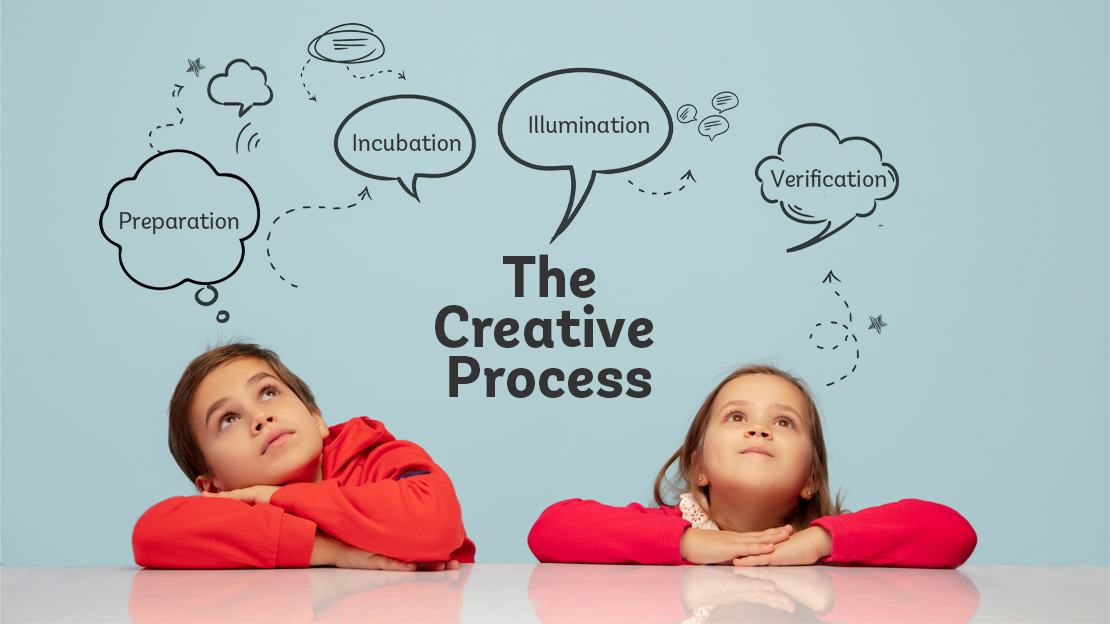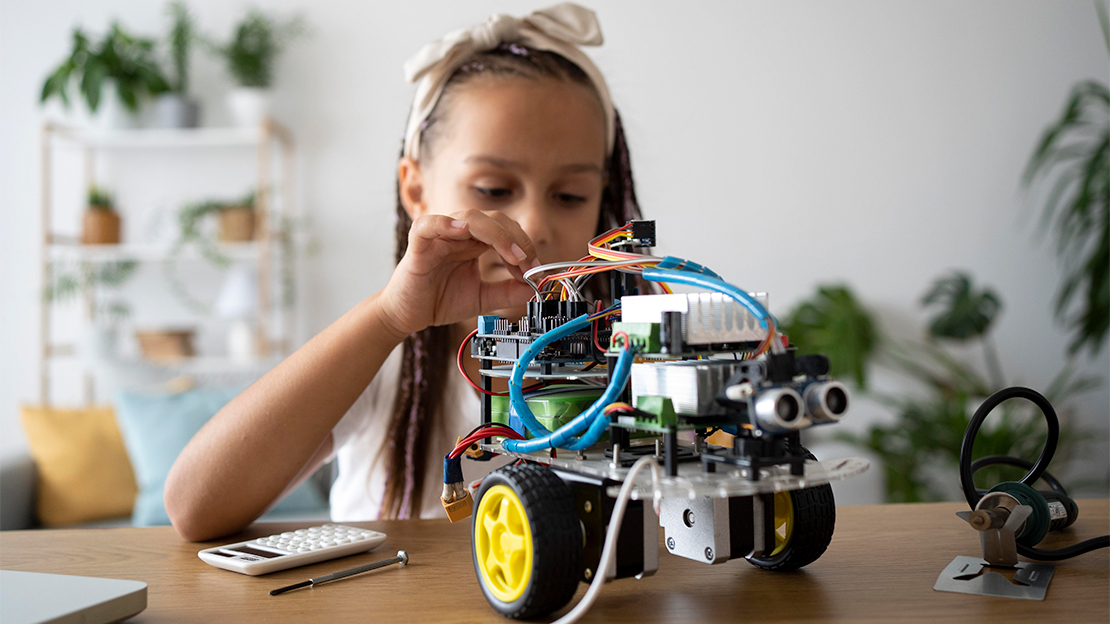Creativity is usually synonymous with imaginative thinking, exploring new ideas, seeing things differently, etc. The common thread that binds all these concepts is the belief that creativity stems from unfettered freedom, letting your imagination run wild, which would ultimately lead to some creative insight.
This same notion is thrust upon children regarding STEM learning and student learning activities such as coding for kids or robotics for kids. As parents, you would probably leave your kids to themselves and let them play with STEM toys, assuming creativity would follow.
Is This Notion Correct?

There is merit in this belief about creativity. Inventing something involves finding connections that seem unrelated at first. Imagination and out-of-the-box thinking are a prerequisite. Childhood is an ideal time for STEM learning as kids are curious and full of questions.
One thing to understand is that the quality of being creative is considered a mixture of a person’s intelligence and some personal qualities or traits. These personality traits are skills that can be developed and nurtured. It leads us to believe that kids can learn to follow certain things that will ultimately make them better at creative activities like coding for kids and robotics.
While some are born with innate talents conducive to creativity, your kids can follow a structured, systematic process, and creativity will flow. However, it is essential to understand that a “growth mindset” is also required, a willingness to get out of the comfort zone and let oneself fail.
The structure lends a pattern to creativity. In many of the creative outputs, the system is already present. For instance, all creative writing stems from the 26 alphabets, and great architecture works follow a plan. The structure also helps define boundaries within which your kids can operate.
The Creative Process

Let us look at what steps or structure your kids can follow in the creative process while learning coding for kids and robotics for kids. These steps were laid out by well-known early 20th-century social psychologist Graham Wallas. They are:
1. Preparation
2. Incubation
3. Illumination
4. Verification
1. Preparation
Preparation is the first step, and as with any other process, it involves setting out the goal of the STEM activity, what needs to be achieved, and what problem needs to be solved.
To do this, your kid would need data and new information, which is the starting point for deriving new ideas. The source of information could be the activity itself, or it could be some secondary source such as manuals, tutorials, etc. Kids would need to get immersed in the problem and absorb as much data which will help them in their quest for the solution.
2. Incubation
Once the kid absorbs the data, the mind begins to process that data which is the incubation stage. This processing may happen at the conscious and unconscious levels trying to form connections to bring out a creative insight.
What’s interesting is the fact that the brain continues to process the information even when your kid may not be working on the problem. Creativity works that way, and we may be unable to pinpoint the exact stimuli that will lead to the light bulb moment. However, one thing is sure more data the kid has absorbed, the more the chances the brain would be able to form connections.
3. Illumination
Illumination is the stage at which the idea would strike your kid. It happens after the information has been incubated in mind. And just like in the incubation stage, the illumination can happen even when the kid is not attending the STEM activity.
It is a moment of joy as this illumination can suddenly come when one isn’t expecting it. The picture becomes more evident, the idea takes a concrete shape, and the dots start getting connected.
4. Verification
The fourth stage in the creative thinking process is the verification stage. The kid needs to ask questions about the idea. Does it have merit? Will it address the problem at hand?
Upon this evaluation, the realization may also be that the idea needs to be improved, and therefore the kid needs to have an open mind to accept the new possibilities. If the idea doesn’t work, the whole creative process might have to be repeated.
What is the optimal way to think?

While the method mentioned above has value, the effectiveness depends on what problem the kid is trying to solve. In the end, the question to ponder is which approach is best when kids are engaging with coding and robotics for kids? Should creativity have a structure?
Following a structure reduces distractions and improves focus and linear thinking. It saves time and can be used for solving analytical problems.
But some problems, by their very nature, will need some extra level of imagination and creative thinking. Creative persons are prone to dislike structure and be prone to distractions. In such scenarios, kids will need to go out of the way to expose themselves to stimuli, stop worrying about the time pressure and let their minds wander off.
It is not a binary situation needing an either-or solution. As parents, you can allow your kids to expose themselves to STEM education problems of varied nature in robotics and coding for kids. These problems require creative ideas and can help kids train their brains to be creative and immediately able to spot connections.

